#john winkler
Photo
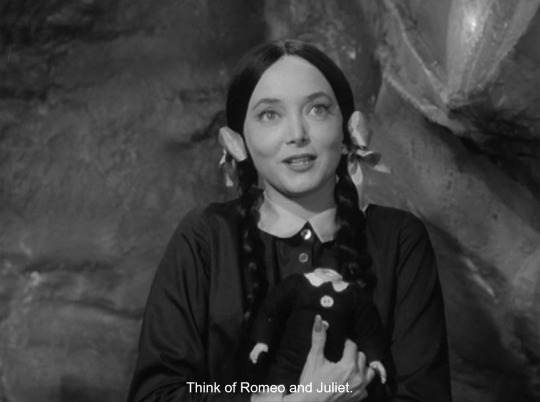
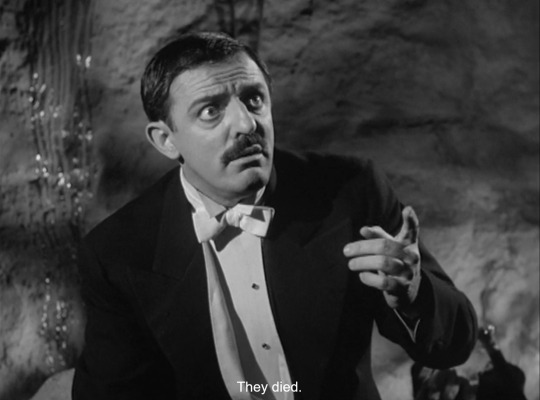

Think of all the many romances that started out a bit wobbly and then worked out.
"Morticia's Romance: Part 2," The Addams Family
directed by Sidney Lanfield
written by Harry Winkler & Hannibal Coons
#harry winkler#hannibal coons#sidney lanfield#morticia addams#gomez addams#john astin#carolyn jones#william shakespeare#marie annette#morticia's romance#romeo and juliet#charles addams#morticia's romance: part 2#the addams family#addams family#morticia frump
207 notes
·
View notes
Text
WATCHLIST 2023: Jungleland




11 notes
·
View notes
Text
For God so loved the world that He gave His only Son, so that everyone who believes in Him might not perish but have eternal life. For God did not send His son into the world to condemn the world, but that the world might be saved through Him. Whoever believes in Him will not be condemned, but whoever does not believe has already been condemned, because he has not believed in the Name of the only Son of God. And this is the verdict, that the Light came into the world, but people preferred darkness to light, because their works were evil. For everyone who does wicked things hates the light and does not come toward the light, so that his works might not be exposed. But whoever lives the truth comes to the light, so that his works may be clearly seen as done in God.
the Gospel According to John (3:16-21)
This is the point of Jesus coming into the world: to reveal to us how much God truly loves us. Still, we have to choose to accept and live in that love. Those who do not accept that love have already condemned themselves (because now they will have to live outside God's love). Those who accept that love have already received their reward (the possibility of living in that love).
Rev. Jude Winkler, O.F.M. Conv.'s commentary on John 3:16-21
And this is the verdict: Judgment is not only future but is partially realized here and now.
the NABRE commentary for John 3:19.
#Christianity#Catholicism#Gospel of John#love#agape#redemption#judgment#Jesus Christ#Light of the World#Jude Winkler
14 notes
·
View notes
Text
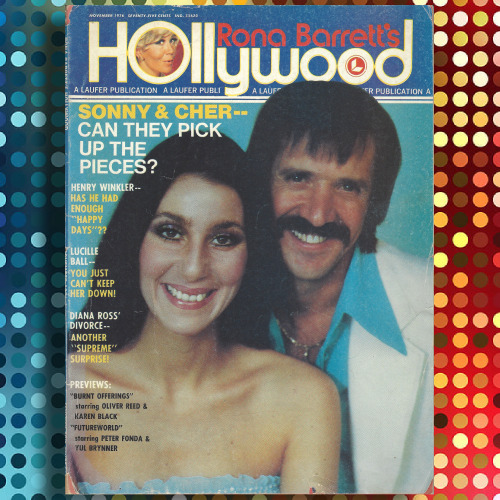

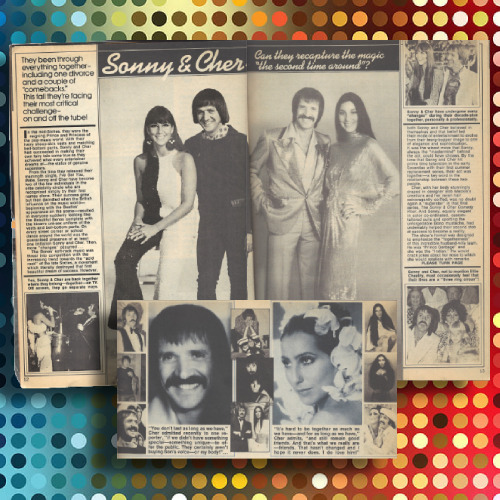

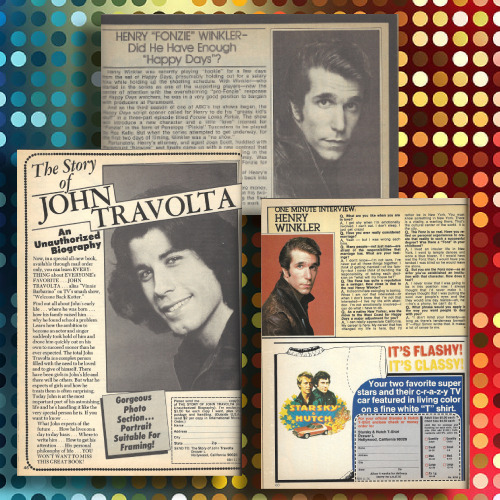

Rona Barrett’s Hollywood. November 1976.
#digital collage#1976#sonny and cher#cher#elton john#john travolta#lucille ball#alfred hitchcock#stockard channing#donny osmond#marie osmond#henry winkler#starsky and hutch#frankie avalon#jaws#1970s#vintage magazine
20 notes
·
View notes
Text

49 notes
·
View notes
Text
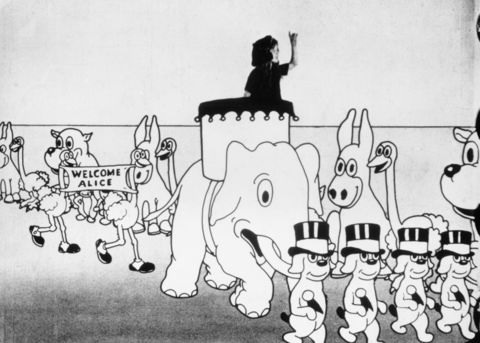
Alice's Wonderland (1923 short)
One hundred years ago today, Walt Disney screened to Margaret Winkler his hybrid animated/live-action short film, Alice’s Wonderland. If the name Margaret Winkler is unfamiliar to you, that is in part due to the fact that much of Hollywood’s mythmaking has obfuscated the impact of certain female creatives during the silent film era. A former secretary to Harry Warner at Warner Bros., Winkler was the premier animated short film executive in the early and mid-1920s. Her company, M.J. Winkler Pictures, flourished at a time before the oligopoly of the soon-to-be-major Hollywood studios, mostly on the backs of Pat Sullivan and Otto Messmer’s Felix the Cat series. At the peak of Felix’s popularity in 1923, a series of arguments between Winkler and Sullivan/Messmer soon meant Winkler was looking for an animated series to replace Felix. She would also be losing the rights to Max and Dave Fleischer’s Out of the Inkwell series, starring Koko the Clown. By the end of 1923, Winkler would sign a deal with Disney to distribute the Alice Comedies.
Impressed by the handiwork of Alice’s Wonderland, Winkler’s deal gave Walt Disney a much-needed infusion of cash. Disney, who founded Laugh-O-Gram Studios in Kansas City, Missouri in 1921, had just barely emerged from Laugh-O-Gram’s bankruptcy. Instead of heading to the then-center of the American animation world of New York City, Walt instead found himself in Los Angeles, partly to help his brother, Roy O. Disney, recover from tuberculosis.
Though a continent away from the major animation players in the U.S. at the time, Disney nevertheless took inspiration from those figures – Bray Productions under John Randolph Bray and especially the animator Winsor McCay (who, by 1921, was forced by employer William Randolph Hearst to stop working on animated film). McCay and Bray were pioneers in gifting animated characters basic personalities and the development of those personalities, growing animated cinema beyond modest gag comedy and simplistic figures. McCay’s Little Nemo (1911) and Gertie the Dinosaur (1914) and Bray’s Bobby Bumps series (1915-1925) may seem quaint to modern audiences, but these films were wildly popular across North America and were instrumental stepping stones to the explosion of American animated innovation in the late 1920s and 1930s.
Alice’s Wonderland was never screened for the public, but it nevertheless spawned a series that lasted for fifty-seven short films. None of it would have been possible without the inspiration Disney and his animators took from the most acclaimed American animation at that time.
With no relation to Lewis Carroll’s two Alice books, Alice’s Wonderland stars Virginia Davis as the title character. Davis, as Alice, is four years old at the beginning of the Alice Comedies series. She visits the animation studio where she sees Walt Disney in the process of drawing some “funnies”. As she sits down, the cartoons on the drawing pages come to life. Most important among those animated figures is Julius the Cat, created by Disney and Ub Iwerks and a predecessor to Oswald the Lucky Rabbit and Mickey Mouse (unlike Oswald and Mickey, Julius has not appeared in an animated film since the silent era). Walt then brings Alice into the animators’ room, where Ub Iwerks, Hugh Harman and Rudolf Ising, and others are also enjoying their work acting out various scenarios (remember those names – we will mention them again later). Alice, still giddy after her visit to the animators’ studio, later drifts off to sleep that evening. And, after dozing off, she finds herself welcome to a Cartoonland of her dreams.
At the time, Alice’s Wonderland was the reverse of what the Fleischers’ Out of the Inkwell series and some of the Bray and McCay shorts attempted. Instead of animated characters inhabiting a live-action world, we have here a live character traipsing around in an animated world. In some of the hybrid animated/live-action short films at the time, the reactions of the characters can be noticeably off. Not so much here. Davis’ reactions to the animated animals are timed with admirable precision. But given the technological constraints at the time and how small Walt Disney’s animators’ team was, Alice’s Wonderland makes heavy use of recycled or looped animation. Viewers who know their Looney Tunes or Hanna-Barbera works probably recognize the effects of a wraparound background and identical walking animation. The effects tend to make certain scenes – such as Alice’s celebratory procession during her dream – last several seconds too long.
youtube
Yet, Alice’s Wonderland still charms. With synchronized sound still four years away, the animators of the early twentieth century set the visual slapstick language that continues to course through modern animated cinema. Julius’ hidden fight with a dog within the latter’s doghouse, an animator using a pen holder as a de facto boxing bell, and a hungry lion cleaning and sharpening his teeth are just previews to the absurd humor that will define the next few decades of American animated short films. So too the tubular limbs from the animated characters. The film’s humor came not just from the films of Bray, McCay, and the Van Beuren Studios, but also the comic strips popular at this time – titles which probably read as quite unfamiliar to most today: Bud Fisher’s Mutt and Jeff (1907-1983; Fisher ceased involvement in 1932), George Herriman’s Krazy Kat (1913-1944), and Winsor McCay’s Dream of the Rarebit Fiend (1904-1925). These comic strips, largely unknown quantities to yours truly while researching for this write-up, influenced the comedic pace and tone for the bulk of American animated short films – a near-forgotten legacy, and one worthy of honoring.
Alice’s Wonderland would solidify the careers of all of the animators involved – all of whom were originally based in the Kansas City area. Walt Disney and Ub Iwerks stayed onboard what would be deemed the Disney Brothers Cartoon Studio (after several name changes, it is now the Walt Disney Animation Studios of today). Disney’s namesake studio is the most visible animated studio in all of cinema, and undoubtedly the most historically and currently significant, for good and ill. For the Alice Comedies, Iwerks experimented with a “matte” – in which a cutout background would be placed over a camera lens to hide where animated figures might be. Iwerks also developed Mickey Mouse with Walt, was one of the leading hands on the Silly Symphony series, and was integral in developing the special visual effects that made animated/live-action hybrid movies like Song of the South (1946) and Mary Poppins (1964) as convincing as they are.
Hugh Harman and Rudolf Ising, who developed the story of Alice’s Wonderland alongside Walt, honed their craft under him. But after Disney sold the rights to Oswald the Lucky Rabbit to Universal in 1928 in a dispute with Winkler’s husband, producer Charles Mintz, Harman and Ising’s time with Disney came to an end. Now on their own, Harman and Ising created Bosko. The Bosko shorts impressed Warner Bros.’ Leon Schlesinger and, in 1930, the trio founded the Looney Tunes and Merrie Melodies series. Harman and Ising would eventually leave Warner Bros. in 1934 to develop the Happy Harmonies series for Metro-Goldwyn-Mayer alongside William Hanna. Animator Isadore “Friz” Freleng also followed Harman and Ising to Warner Bros. and MGM, and was central to the creation of the likes of Porky Pig, Sylvester, and Yosemite Sam. Also following Freleng was Carman Maxwell, who spent the bulk of his career as a production manager for MGM’s animated shorts.
Actress Virginia Davis also moved out from Kansas City to Southern California to join Disney to star in the Alice Comedies. Davis appeared in fifteen of the fifty-seven Alice Comedies, ending her tenure with Alice in the Jungle (1925). She was able to nab the occasional minor child actress role and ended her career in the 1940s as uncredited dancers or chorus girls. She married in 1943 to a Navy airman and became a real estate agent active in the areas around Irvine, California and Boise, Idaho.
Margaret Winkler could be an exacting critic to Walt Disney and his animators, but she nevertheless sent words of encouragement, making suggestions where she saw fit to the rough cuts of the films. Her critiques plus the relatively expensive cost in making an Alice short saw Disney struggle to meet deadlines at first. But when Disney was able to convince Harman and Ising to move from Kansas City to Los Angeles, the pace of production hastened. Winkler retired from the film business in 1926 after the birth of her first child, with shockingly no one thinking to interview her about her work in the silent era before her death in New York state in 1990.
The Alice Comedies, beginning with Alice’s Wonderland, set the stage for American animated film in the early and middle twentieth century. Several figures involved in the series’ animation and storytelling paved careers that would deeply impact the direction of what today is Walt Disney Animation Studios. Others, like Harman, Ising, Freleng, and Maxwell, took with them Walt Disney’s artistic vision and guidance and spread that to two of the studio’s soon-to-be rivals in MGM and Warner Bros.
A century since Walt Disney screened Alice’s Wonderland for Margaret Winkler, Walt Disney Animation Studios has grown and evolved. The modern-day studio, I will argue, does not adhere to Walt Disney’s vision of making animated movies as dramatically and emotionally powerful as any live-action movie as faithfully as it could – and, in my opinion, has not consistently done so in at least a quarter-century. But the studio, and its legacy, started humbly, just hoping to please a crowd with sharp visual gags in the wild early days of animated silent film. Such were the initial hopes of John Randolph Bray and Winsor McCay. From the Alice Comedies to the Silly Symphony shorts to Snow White and the Seven Dwarfs (1937), Walt Disney and his fellow animators added to the foundation that their predecessors built.
My rating: 7/10
^ Based on my personal imdb rating. My interpretation of that ratings system can be found in the “Ratings system” page on my blog. Half-points are always rounded down.
For more of my reviews tagged “My Movie Odyssey”, check out the tag of the same name on my blog.
#Alice's Wonderland#Alice Comedies#Walt Disney#Margaret Winkler#Hugh Harman#Rudolf Ising#Ub Iwerks#Virginia Davis#Margaret Davis#Carman Maxwell#Friz Freleng#Julius the Cat#Laugh-O-Gram Studios#Disney#Disney 100#Winsor McCay#John Randolph Bray#silent film#My Movie Odyssey
8 notes
·
View notes
Text
The Net (1995) Review
Angela Bennett is a computer expert working as a programmer and stumbles across some government secrets and then finds herself being targetted by an unknown enemy and when everything is saved online it can be changed …
⭐️⭐️⭐️
Continue reading The Net (1995) Review

View On WordPress
#1995#Action#Charles Winkler#Christopher Darga#Crime#Daniel Schorr#Dennis Miller#Diane Baker#Drama#Gene Kirkwood#Irwin Winkler#Jeremy Northam#John Brancato#Juan Garcia#Ken Howard#Kristina Krofft#L. Scott Caldwell#Margo Winkler#Michael Ferris#Netflix UK#Ray McKinnon#Review#Robert Gossett#Sandra Bullock#The Net#Tony Perez#Wendy Gazelle
2 notes
·
View notes
Text
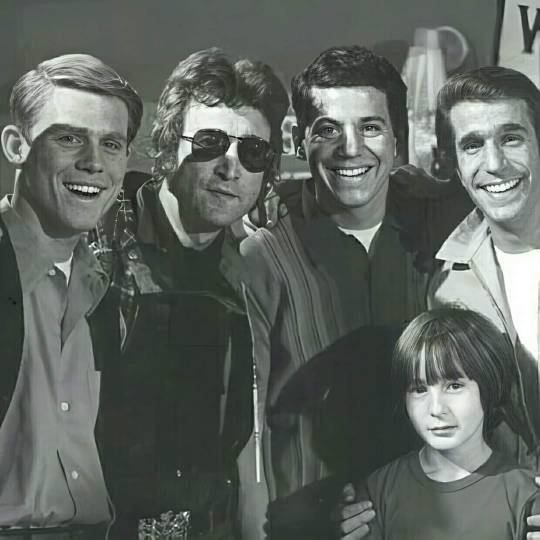
2 notes
·
View notes
Text
Kati Winkler and René Lohse 2001 Original Dance “Charleston + Quickstep”
Cabaret by John Kander.
#fishnets over skates is challenging for me but kati can do whatever she wants bc i love her & she has good karma from rocking tan skates#ice dance#kati winkler#rene lohse#figure skating#charleston#quickstep#cabaret#john kander
11 notes
·
View notes
Text
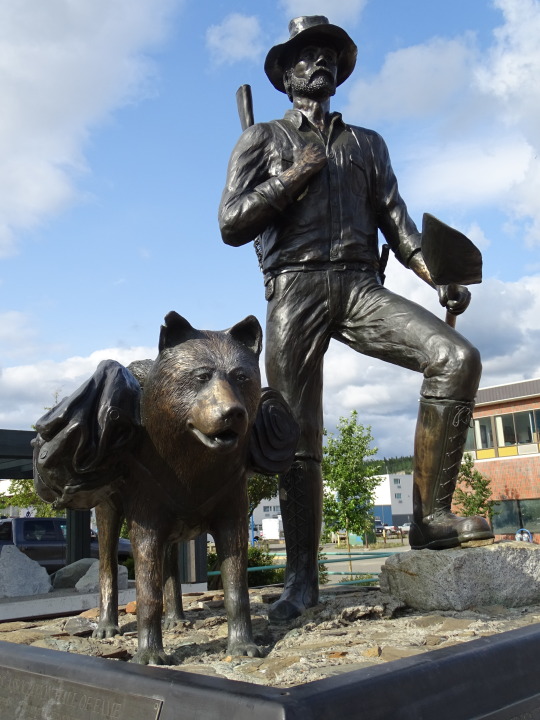

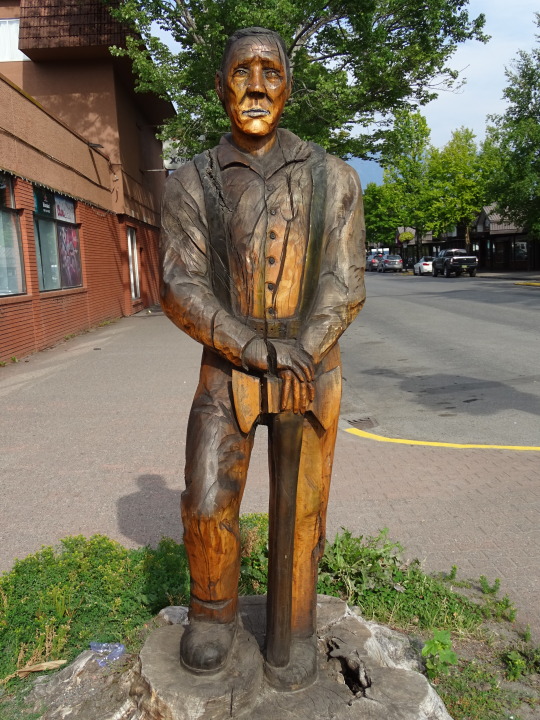

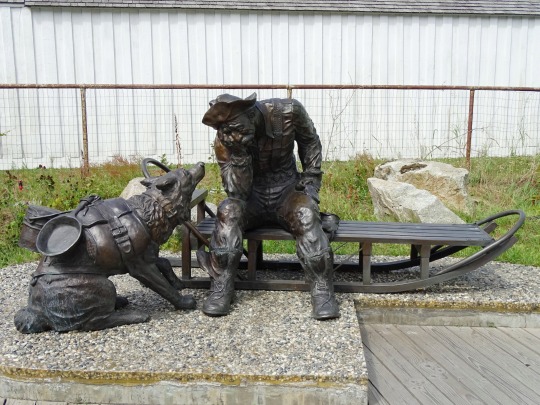

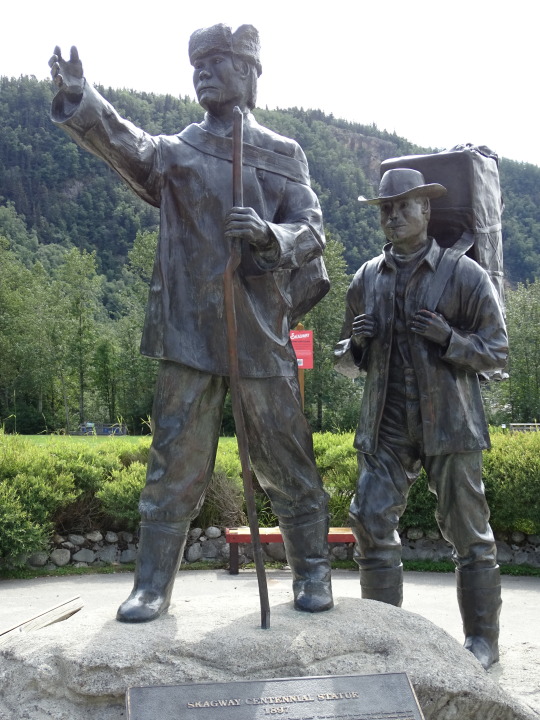



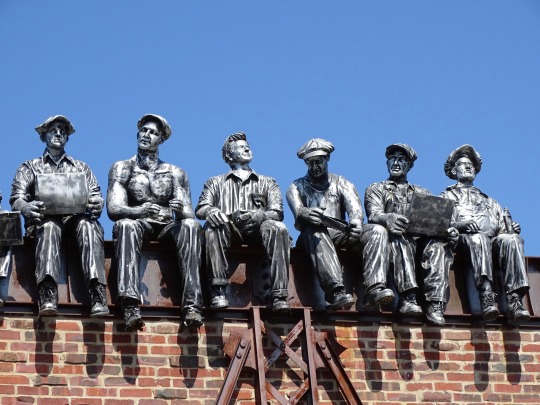

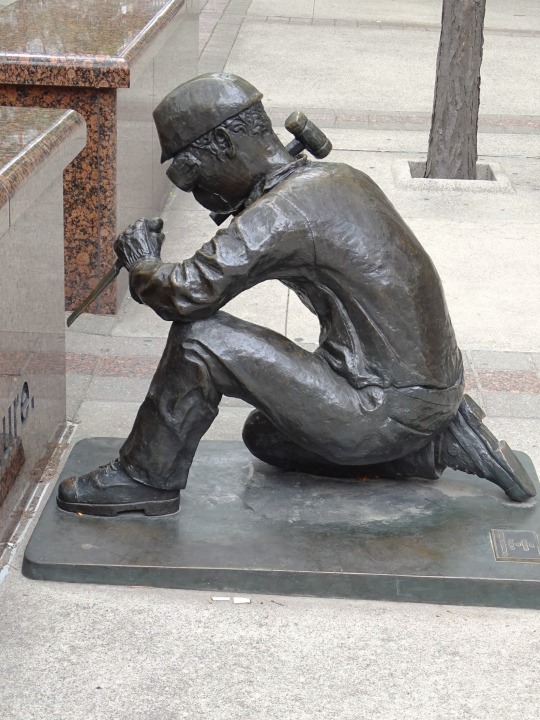
Labor Day
Summer’s final fling has arrived in the form of Labor Day. Yes, most of us get the day off, but this holiday triggers mixed emotions. While summer still has 21 calendar days left, it’s time to get serious. School’s starting and there’s a sense that summer vacation is over. So what’s behind Labor Day — and how did it earn a place as a federal holiday?
Let’s take a look.
When is Labor Day 2023?
Labor Day always falls on the first Monday in September, which means anywhere from September 1 through September 7. This year it's September 4 in the U.S. and Canada. However, this is not the case for most countries — the majority of which celebrate on May 1.
History of Labor Day
Do you get weekends off work? Lunch breaks? Paid vacation? An eight-hour workday? Social security? If you said “yes” to any of these questions, you can thank labor unions and the U.S. labor movement for it. Years of hard-fought battles (and the ensuing legislation they inspired) resulted in many of the most basic benefits we enjoy at our jobs today. On the first Monday in September, we take the day off to celebrate Labor Day and reflect on the American worker’s contributions to our country.
Labor Day History
There’s disagreement over how the holiday began. One version is set in September 1882 with the Knights of Labor, the largest and one of the most important American labor organizations at the time. The Knights in New York City held a public parade featuring various labor organizations on September 5 — with the aid of the fledgling Central Labor Union (CLU) of New York. Subsequently, CLU Secretary Matthew Maguire proposed that a national Labor Day holiday be held on the first Monday of each September to mark this successful public demonstration.
In another version, Labor Day in September was proposed by Peter J. McGuire, a vice president of the American Federation of Labor. In spring 1882, McGuire reportedly proposed a “general holiday for the laboring classes” to the CLU, which would begin with a street parade of organized labor solidarity and end with a picnic fundraiser for local unions. McGuire suggested the first Monday in September as an ideal date for Labor Day because the weather is great at that time of year, and it falls between July 4th and Thanksgiving. Oregon became the first U.S. state to make it an official public holiday. 29 other states had joined by the time the federal government declared it a federal holiday in 1894.
Maguire or McGuire? Read more on this unusual coincidence in our FAQs below.
What is the Haymarket affair?
On May 4, 1886 — at a time when most American laborers worked 18 or even 20 hours a day — tens of thousands of workers protested in cities all across the U.S. to demand an eight-hour workday. Police in Chicago attacked both those peaceful protests and a workers planning meeting two days later, randomly beating and shooting at the planning group and killing six. When outraged Chicagoans attended an initially peaceful protest the next evening in Haymarket Square, police advanced on the crowd again. Someone who was never identified detonated a bomb that killed a police officer, leading cops to open fire on protesters and provoke violence that led to the deaths of about a dozen workers and police.
The Pullman strike
Ironically, Chicago was also the setting for the bloody Pullman strike of 1894, which catalyzed the establishment of an official Labor Day holiday in the U.S. on the first Monday of September.
The strike happened in May in the company town of Pullman, Chicago, a factory location established by luxury railroad car manufacturer the Pullman Company. The inequality of the town was more than apparent. Company owner George Pullman lived in a mansion while most laborers stayed in barracks-style dormitories. When a nationwide depression struck in 1893, Pullman decided to cut costs the way a lot of executives at the time did — by lowering wages by almost 30% while he kept the rent on the dormitories he leased to his workers at pre-depression levels.
Railroad boycott
These conditions ultimately led workers to strike on May 11, 1894. The walkout gained the support of the nationwide American Railroad Union (ARU), which declared that ARU members would no longer work on trains that included Pullman cars. That national boycott would end up bringing the railroads west of Chicago to a standstill and led to 125,000 workers across 29 railroad companies quitting their jobs rather than breaking the boycott.
When the Chicago railroad companies hired strikebreakers as replacements, strikers also took various actions to stop the trains. The General Managers Association, which represented local railroad companies, countered by inducing U.S. Attorney General Richard Olney, a former railroad attorney, to intervene. Indianapolis federal courts granted Olney an injunction against the strike, a move that allowed President Grover Cleveland to send in federal troops to break it up.
A few days later, Cleveland realized that he had to act quickly to appease the country’s increasingly agitated labor movement. But he didn’t want to commemorate the Haymarket incident with a May holiday that would invoke radical worker sentiment. So Cleveland harkened back to the first established September 1882 holiday and signed into law that Labor Day in the U.S. would be celebrated on the first Monday in September.
Labor Day vs. May Day
Communist and socialist factions worldwide eventually chose May 1 as the date to mark the Haymarket affair. A 1904 conference issued a plea that trade unions stage rallies on the first day of May — demanding to make the eight-hour workday standard. They organized the action in the name of “universal peace.” The 1st of May is a national, public holiday in many countries across the world, generally known as “Labour Day,” “International Workers’ Day,” or a similar name – although some countries celebrate a Labor Day on other dates significant to them, such as Canada, which celebrates Labor Day, like the U.S., on the first Monday of September.
Here’s the U.S. Department of Labor’s official tribute to U.S. workers on Labor Day:
“The vital force of labor added materially to the highest standard of living and the greatest production the world has ever known, and has brought us closer to the realization of our traditional ideals of economic and political democracy. It is appropriate, therefore, that the nation pays tribute on Labor Day to the creator of so much of the nation’s strength, freedom, and leadership — the American worker.”
Related Labor Day Content
1) Top Labor Day quotes for your social feeds
Can you guess which president said, “My father taught me to work; he did not teach me to love it”? How about the famous American who uttered “All labor that uplifts humanity has dignity”? We have a list of Labor Day quotes to not only learn about the holiday but to also impress your friends at the barbecue.
2) Fire yourself from your own job
That’s correct. The makers of STōK cold-brew coffees have designed a contest — running through Labor Day — which will give three people $30,000 each in order to take a four-week “STōKbbattical” (from their dreary day jobs) and “make their dreams happen.” It can be anything from rock climbing in Patagonia to setting records for the number of tapas eaten in Spain. No matter what, STōK will help fund it. Unless of course, you’d prefer to spend the next four weeks filling out TPS reports.
3) 8 Labor Day Activities To Enjoy
Whether in the form of a leisurely barbeque, a relaxing swim in the pool, watching a film at a drive-in cinema, or even just relaxing at home with family, there are so many different ways to mark the occasion. We list some activities to try on Labor Day.
Labor Day timeline
1882 It’s Unofficial
10,000 labor workers march through Union Square in New York to protest poor working conditions and low wages.
1884 A Date is Set
The first Monday of September officially becomes Labor Day, with the Central Labor Union pushing other organizations to follow suit and celebrate.
1894 Congress Approves
Labor Day is approved as a national holiday by Congress, and President Grover Cleveland signs it into law.
2009 Let’s Not Forget Women in Labor
President Obama restores the rights of women to sue over pay discrimination with the Lilly Ledbetter Fair Pay Act.
Labor Day Traditions
Much like Memorial Day, which marks the traditional beginning of summer, Labor Day generally signifies that the season has ended — even though the calendar says otherwise. Holiday sales, barbecues, and travel tend to rule the day, while children finally adjust to the harsh reality of the “back-to-school” season. As far as U.S. sports are concerned, Labor Day weekend signals that baseball’s pennant races have entered their final stretch, and tennis fans get an extra day to watch the season’s last Grand Slam event — the U.S. Open in New York City. NFL regular-season games typically begin following Labor Day.
Labor Day by the numbers
162 million – the number of Americans (over 16) in the labor force.
40% – the percentage of U.S. workers who belonged to labor unions in the 1950s (that dropped to 11% by 2018).
1894 – the year Congress officially made Labor Day a federal holiday.
86% – the percentage of Americans planning Labor Day weekend travel who will do so by car.
41% – the percentage of Americans who plan to barbecue over Labor Day Weekend.
818 – the number of U.S. hot dogs eaten every second from Memorial Day to Labor Day.
$685 – the average kid’s back-to-school expenses.
$55,000 – the median U.S. household income.
705 million – the total number of U.S. unused vacation days (2017).
80% – the percentage of Americans who would take time off if their boss were more supportive.
— courtesy WalletHub ©2018
Labor Day FAQs
What does Labor Day really mean?
Americans, as well as workers around the world, celebrate Labor Day by reflecting on all the contributions everyday workers have made to society. Not all countries observe Labor Day on the same date though.
When is Labor Day 2020?
The U.S. observed Labor Day 2020 on Monday, September 2. It’s a federal holiday. Financial markets are closed. There is no mail delivery. Post offices and libraries are closed. Most retail businesses will remain open.
Who invented Labor Day?
It’s more confusing than you might think. The Labor Department explains it this way:
While most sources, including the U.S. Department of Labor, credit Peter McGuire with the origination of Labor Day, recent evidence suggests that the true father of Labor Day may, in fact, be another famous union leader of the 19th century, Matthew Maguire.
Maguire held some political beliefs that were considered fairly radical for the day and also for Samuel Gompers and his American Federation of Labor. Allegedly, Gompers, who co-founded the AFL along with his friend McGuire, did not want Labor Day to become associated with the sort of “radical” politics of Matthew Maguire. So in an 1897 interview, Gompers’ close friend Peter J. McGuire was assigned the credit for the origination of Labor Day.
What's the difference between Labor Day and May Day (May 1)
May 1 (or May Day) is a more radicalized version of Labor Day in many countries. The date recalls Chicago’s Haymarket affair in 1886. American workers, tired of 18-hour days, staged a protest. Police eventually fired on the workers — killing eight. The following night, May 4, another rally turned violent when someone threw a bomb at police officers. An estimated 11 people died and scores more were injured. Communist and socialist political parties eventually chose May 1 as the date to honor the dead and injured workers.
Labor Day Activities
Read up on the history of Labor Day
Buy an American-made product
Watch a movie about labor unions
Labor Day has a rich history that directly impacts the working conditions we experience today. So in between rounds of BBQ at your Labor Day celebration, take the time to discuss the U.S. labor movement and its contribution to our country's current work culture.
When you're doing your Labor Day shopping, take the time to read the labels. Consider buying products that say "Made in the USA" to show your support for American workers.
Many of us get Labor Day off. What better way to relax than to stretch out on the couch and watch a movie about the American labor movement? There are tons of union-themed movies to choose from. "Norma Rae" ring a bell? Side note: Unions play a major role in the entertainment industry.
5 Labor Day Facts Everyone Should Know!
It’s on May 1 in other countries
Stores remain open
Third most popular holiday for outdoor cookouts
Labor Day marks the unofficial NFL kickoff
Union members today
Most countries around the world celebrate Labor Day on May 1, and it is called International Workers’ Day.
While most schools and offices are closed on Labor Day, retail workers and shopkeepers don’t get the same break, as the holiday is huge for sales and shopping.
Labor Day is right behind the Fourth of July and Memorial Day in being the most popular holiday for barbecues and cookouts.
99.4% of the time, the NFL’s first official game of the season is on the Thursday following Labor Day.
In 2017, there were 14.8 million union members, according to the Bureau of Labor Statistics, while in 1983, there were 17.7 million.
Why We Love Labor Day
We're hard workers — we deserve the day off
It's one last chance to grill
It's the reason we can say TGIF
Statistics show that Americans work longer hours than citizens of most other countries — 137 more hours per year than Japan, 260 more per year than the U.K., and 499 more than France. And our productivity is high — 400% higher than it was in 1950, to be exact. So we totally deserve that day off.
Labor Day is widely considered to be the unofficial last day of summer. Before the air turns cold and the leaves start to fall, it's our last chance to grill some steaks and wear shorts.
Labor Day is a time to celebrate the benefits we enjoy at our jobs — including weekends off. The concept of American workers taking days off dates back to 1791, when a group of carpenters in Philadelphia went on strike to demand a shorter workweek (10-hour days, to be exact). It wasn't until 1836 that workers started demanding eight-hour workdays. So nine to five doesn't sound so bad after all.
Source
#Logger by Joerg Jung#Prospector and his dog by Chuck Buchanan#Stampeder Statue by Peter Lucchetti#Skagway Centennial Statue by Chuck Buchanan#Standing Together by John Greer#Anonymity of Prevention by Derek Lo and Lana Winkler#Terrace#Skagway#Ottawa#Chicago#New York City#Toronto#Whitehorse#USA#Canada#Labor Day#First Monday in September#4 September 2023#LaborDay
2 notes
·
View notes
Text
2023 Golden Globe BEST SUPPORTING ACTOR, TV SERIES Nominees
John Turturro - Severance
Henry Winkler - Barry
Tyler James Williams – Abbott Elementary
John Lithgow* - The Old Man
Jonathan Pryce – The Crown

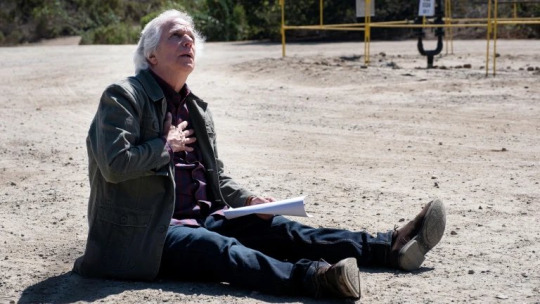
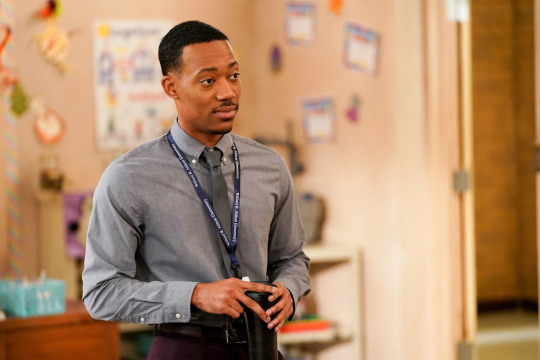
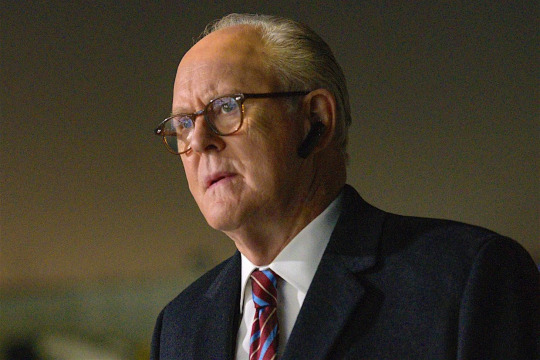

Photo: Film Updates/Netflix
*In 2017, John Lithgow won an Emmy (Outstanding Supporting Actor in a Drama Series) for playing Winston Churchill in The Crown season 1. He was also nominated for a Golden Globe Award for Best Performance by an Actor in a Supporting Role in a Series, Limited Series or Motion Picture Made for Television.
**In 2020, Jonathan Pryce was nominated for both a Golden Globe Award and the Oscar for Best Performance by an Actor in a Motion Picture - Drama
The Two Popes (2019)
#jonathan pryce#john lithgow#john turturro#henry winkler#tyler james williams#the crown netflix#the crown#the old man#severance#barry#abbott elementary#the crown season 5#the crown cast#best supporting actor#awards#nominations#golden globes awards#award season#thecrownnet#the crown network
8 notes
·
View notes
Text

John Lennon brought his son, Julian, to the set of Happy Days because it was his favorite show. Picture from Anson Williams recently published memoir.
#john lennon#julian lennon#anson williams#henry winkler#ron howard#don most#happy days#sitcoms#70s music#70s television#70s teens#70s nostalgia#vintage photography#black and white photography
19 notes
·
View notes
Text
My Dream Emmy 2022 Nominations: Outstanding Supporting Actor in a Comedy Series


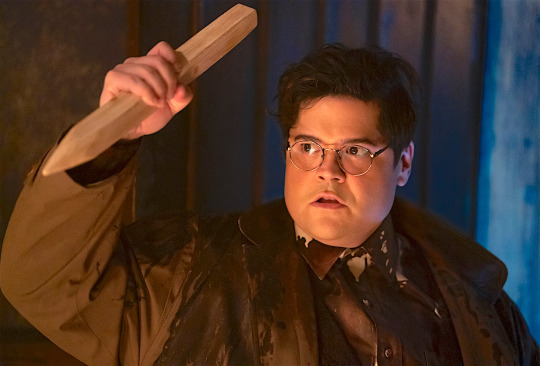

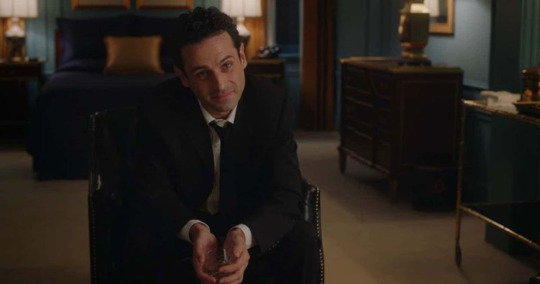
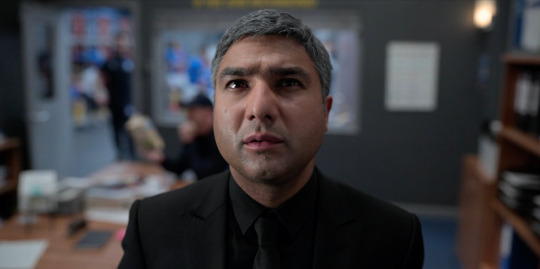
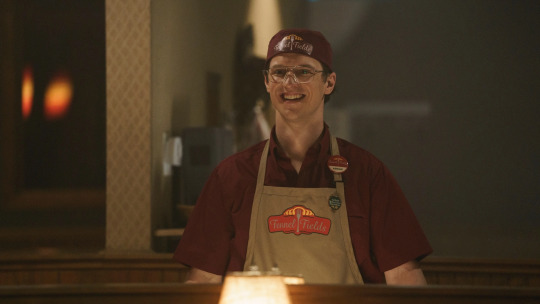

in alphabetical order:
Anthony Carrigan (Barry)
John Early (Search Party)
Harvey Gullien (What We Do in the Shadows)
Luke Kirby (The Marvelous Mrs. Maisel)
Brian Tyree Henry (Atlanta)
Nick Mohammed (Ted Lasso)
Freddie Stroma (Peacemaker)
Henry Winkler (Barry)
#emmys#2022 emmys#anthony carrigan#john early#harvey guillen#luke kirby#brian tyree henry#nick mohammed#freddie stroma#henry winkler#barry#search party#what we do in the shadows#the marvelous mrs. maisel#atlanta#ted lasso#tl#peacemaker#noho hank#elliott goss#guillermo de la cruz#lenny bruce#paper boi#nate shelley#adrien brody#Vigilante#gene cousineau#my posts#ablogthatishenceforthmine
6 notes
·
View notes
Text
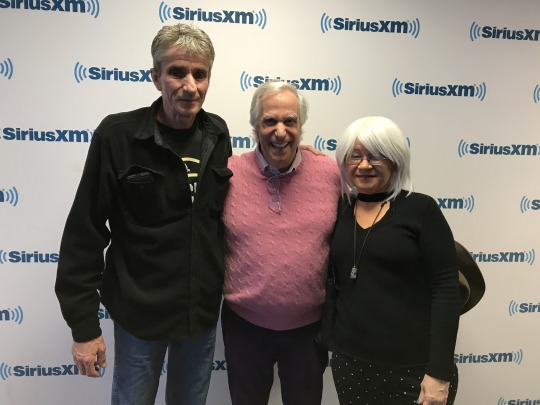
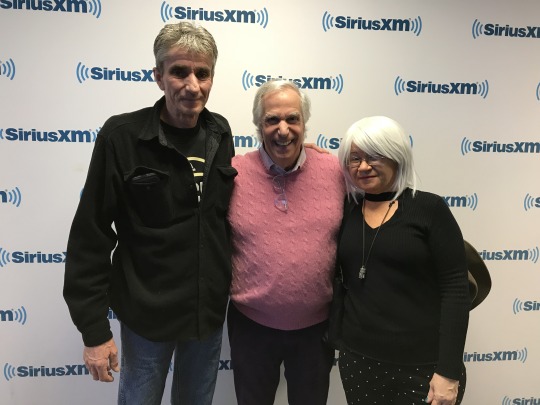
Having your parents meet Henry Winkler.
#paul ofcharsky#paulofcharsky#ofcharsky#redtwin#john#christine#fonzie#happy days#henry winkler#mom#dad
0 notes
Text
Being Henry: The Fonz . . . and Beyond by Henry Winkler #ARCReview #AudiobookReview #BookReview #TheFonz #Television #MacmillanAudio #NetGalley
Remember #TheFonz from the 70s #television show, #HappyDays? #BeingHenryTheFonzand Beyond is a forthcoming book by #HenryWinkler. I was privileged to get an #audiobook #ARC from #NetGalley and #MacmillanAudio #bookreview #Hollywood #macgyver #newbooks
From Emmy-award winning actor, author, comedian, producer, and director Henry Winkler, a deeply thoughtful memoir of the lifelong effects of stardom and the struggle to become whole.
Henry Winkler, launched into prominence by his role as “The Fonz” in the beloved Happy Days, has transcended the role that made him who he is. Brilliant, funny, and widely-regarded as the nicest man in Hollywood…

View On WordPress
#1970s Television#1980&039;s Television#1980s Television#Actor#ARC#ARC Review#Arrested Development#Audiobook Review#Barry#Book Review#Director#Fonzie#Gary Marshall#Happy Days#HBO#Henry Winkler#Hollywood#John Ritter#Laverne & Shirley#MacGyver#Milwaukee#New Books#Parks and Recreation#Producer#Richard Dean Anderson#Ron Howard#The Fonz#Wisconsin
0 notes
Text
1982: The Greatest Geek Year Ever Review- A Docuseries That Brought Me Back to My Childhood in a Great Way
The fact that 1982 is a year that has been one that made me who I am today is pretty incredible to me. That year had so many of my favorite movies. ET the Extraterrestrial is a film that has been one of the most influential movies of my lifetime. I was only 8 years old at the time, but I loved that movie so much. I still remember watching it at a drive-in theater, and I felt ET and Elliot (Henry…
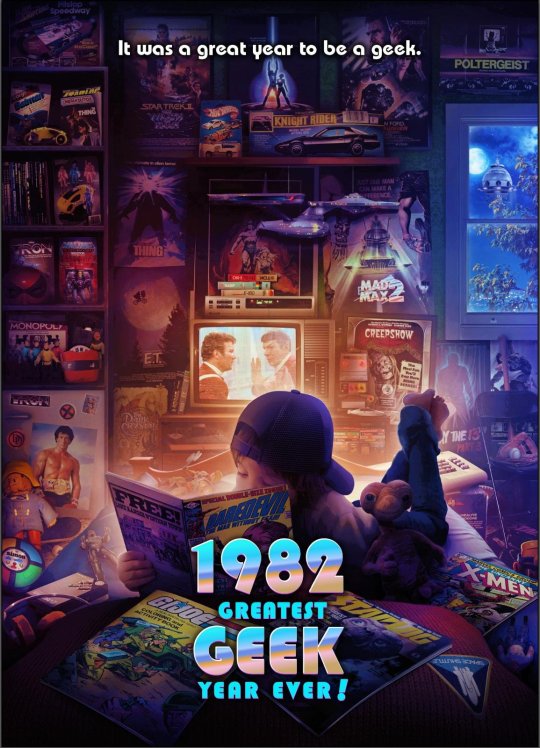
View On WordPress
#1982 The Greatest Geek Year Ever#Adrianne Barbow#Aslem Richardson#Barry Bostwick#Brea Grant#Bryan Fuller#Bryan Rafferty#Dean Devlin#Dee Wallace#Don Coscarelli#Drew McWeeny#Grea Drake#Henry Winkler#John Carpenter#Leonard Maltin#Marc Guggenheim#Marc Miller#Mark S Altman#Paramount Pictures#Paul Schrader#Robert Meyer Burnett#Roger Cormen#Ron Howard#Scott Mantz#Shawn Mendez#the CW#Wes Craven
1 note
·
View note